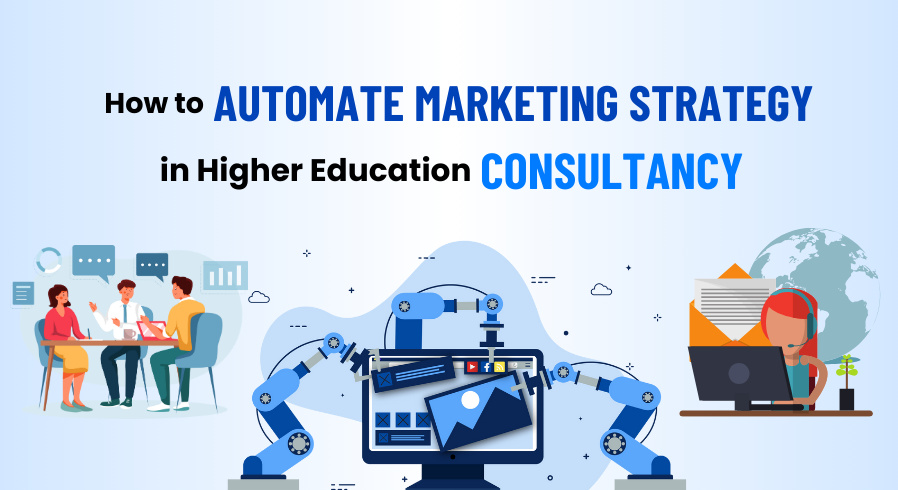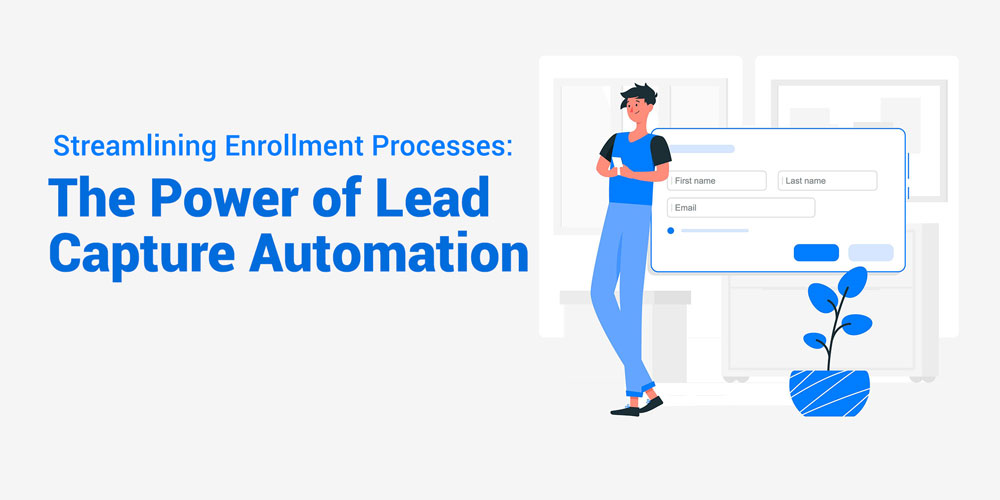Table of Contents

In today’s competitive business landscape, mastering the art of opportunity management can be the key to unlocking your sales potential. Effective opportunity management involves much more than just converting leads; it requires a deep understanding of sales processes and strategically leveraging technology to streamline operations. As businesses increasingly turn toward data-driven strategies, the ability to differentiate quality opportunities from mere leads can set successful sales teams apart.
Opportunity management starts with grasping the subtleties of the sales funnel and the pivotal role customer relationship management (CRM) systems have in monitoring and cultivating prospects. Automation further streamlines these processes, increasing efficiency and enabling sales teams to direct their energy towards high-value activities. By making interactions personalized and adopting value-based selling practices, businesses can significantly enhance customer experiences and conversion rates.
This comprehensive guide explores various strategies to enhance your sales potential, from employing effective lead qualification techniques to employing multi-channel sales approaches. Discover how educational content marketing, inter-departmental collaboration, and strategic alignment can elevate your sales game. We’ll also delve into maximizing competitive advantages, overcoming common challenges, and measuring success through innovative tools and technologies.
Understanding Sales Opportunity Management
Sales opportunity management is vital for guiding deals through the sales pipeline. It helps convert leads into loyal customers. By adopting a structured approach, sales managers and sales reps can improve performance and enhance customer interaction.
Here are a few benefits of sales opportunity management:
- Resource Allocation: Accurately assess opportunities using data insights to allocate resources effectively.
- Prioritization: Use opportunity management software to focus on high-potential deals.
- Decision-Making: Make informed decisions by planning strategies tailored to each potential deal.
- Sales Forecasting: Improve prediction accuracy, leading to increased revenue.
The sales cycle involves understanding potential customers and their needs. Tracking key metrics helps in offering valuable insights, allowing for effective sales strategies. This enhances customer satisfaction and experience.
Key Elements of Sales Opportunity Management
| Elements | Benefits |
| Sales Pipeline | Manages potential deals strategically |
| Customer Insights | Informs better marketing efforts |
| Strategy Planning | Boosts conversion rates |
Efficient management aligns with business goals and helps in building strong customer relationships. By understanding buyer personas, sales activities become more targeted and successful. Opportunity management is the key to maximizing sales potential in education.
Differentiating Leads from Opportunities
In the world of sales, understanding the difference between leads and opportunities is crucial for success. Leads are potential customers found through marketing efforts. They show interest but are not yet ready to purchase. Opportunities, on the other hand, are qualified leads with a higher chance of closing a deal.
Here's a simple distinction:
| Leads | Opportunities |
| Potential customers | Qualified leads |
| Found through marketing | Assessed by sales teams |
| Likely to convert later | Close to the final sales stage |
A lead becomes an opportunity after being evaluated by the sales team as likely to convert into a sale. These opportunities arise from leads who have moved through the sales pipeline and are nearing a decision to purchase.
Effective opportunity management involves tracking and managing these potential deals. Sales reps and sales managers focus on capturing, nurturing, and guiding these prospects to conversion.
To maximize sales potential, it is important to differentiate between leads and opportunities. This allows sales teams to make informed decisions and implement effective sales strategies. By doing so, businesses can improve their conversion rates and achieve their sales goals.
The Importance of CRM in Opportunity Management
CRM software is crucial in opportunity management for education sales. It automates tasks like data entry and follow-up reminders. This helps sales teams focus on high-value activities and improves efficiency.
With CRM systems, sales teams can keep detailed records of all customer interactions. This provides a full view of past communications, allowing for more tailored outreach. CRM tools also offer analytics that help businesses analyze key metrics like conversion rates and sales cycle lengths. This enables informed decisions and strategic adjustments to maximize sales opportunities.
Implementing CRM solutions streamlines the sales pipeline. It visualizes the process, ensuring everyone knows each stage from lead generation to closing. CRM features allow sales teams to segment and prioritize opportunities based on deal size or industry. This helps teams allocate resources to high-potential leads, increasing the chances of conversions.
Here’s how CRM boosts opportunity management:
- Automates tedious tasks
- Maintains interaction records
- Provides analytics capabilities
- Streamlines sales pipeline visualization
- Helps prioritize high-potential leads
Incorporating CRM tools can lead to more effective sales strategies, ensuring success in reaching business goals and enhancing customer satisfaction.
Benefits of Automation in Sales Processes
Automation in sales processes can transform how sales teams function. By streamlining tasks like lead generation and follow-ups, automation allows teams to focus on closing deals and nurturing relationships. This reduces manual errors, leading to quicker sales cycles and improved conversion rates.
Benefits of Sales Automation:
- Efficiency Boost: Tools like HubSpot Sales and Pipedrive automate repetitive tasks like data entry and lead assignment. This increases overall efficiency.
- Real-Time Insights: Automation provides real-time data, shifting sales from intuition-driven to data-driven strategies.
- Reduction in Administrative Tasks: With automation, sales reps can concentrate on high-value interactions, like negotiations and deal closures.
| Key Benefit | Impact on Sales |
| Streamlined Processes | Faster sales cycles |
| Reduced Manual Work | Higher conversion rates |
| Data-Driven Decisions | Enhanced decision-making |
By minimizing low-value tasks, sales teams save time and make the most of customer interactions. Implementing sales force automation systems allows sales representatives to focus more on negotiations, improving customer satisfaction and overall experience.
Effective Lead Qualification Techniques
Effective lead qualification techniques are crucial for optimizing your sales pipeline. By evaluating potential customers based on criteria such as budget, needs, and decision-making authority, sales reps can focus on high-potential leads. A scoring system plays a key role in this process, offering sales reps a way to prioritize leads with the highest chance of conversion.
Here's how lead qualification transforms your sales activities:
- Scoring System: This system categorizes leads based on their likelihood to convert. It considers factors like engagement levels and fit with the target market.
- Early Qualification: By identifying high-potential leads early, sales teams can focus their marketing efforts more efficiently, thus increasing conversion rates.
- Key Metrics: Effective qualification uses metrics like behavioral signals to assess a lead’s interest and readiness to buy.
- Sales Pipeline Management: Authentic opportunities are moved into the sales pipeline, ensuring valuable insights and resources aren’t wasted on unpromising leads.
These strategies enable sales managers to make informed decisions and align their sales cycles with business goals, ultimately enhancing customer satisfaction. By adopting these techniques, sales teams can improve conversion rates and meet their business objectives more effectively.
Data-Driven Insights for Improved Decision Making
Data-driven insights play a crucial role in improving decision-making for sales teams. Most CRM systems now provide valuable analytics tools that offer in-depth views into sales opportunities. These tools highlight key metrics like conversion rates and sales cycle lengths.
Benefits of Data-Driven Insights:
- Identify Trends: Insights help spot trends in the sales pipeline, allowing sales managers to adjust their strategies.
- Spot Bottlenecks: By identifying potential bottlenecks, sales reps can streamline customer interactions for smoother processes.
- Prioritize Deals: Opportunity management software aids businesses in focusing on high-potential deals, effectively distributing resources.
Moreover, sales automation tools handle repetitive tasks and offer real-time data. This enables more informed decisions and boosts customer satisfaction and experience. A data-driven approach also uncovers growth opportunities by predicting customer behavior accurately. Here's a quick table summarizing the impact:
| Insight Type | Benefits |
| Trends | Optimize sales strategy |
| Bottlenecks | Enhance sales activities |
| Prioritize Deals | Efficient resource allocation |
| Automation | Real-time valuable insights |
Maximize your marketing efforts and align them with business goals by leveraging these insights. This way, you balance strategy with customer relationship management and achieve better outcomes.
Personalizing Customer Interactions
Personalizing customer interactions means tailoring recommendations and offers based on each customer's preferences, past purchases, and browsing behavior. By delivering personalized product suggestions, targeted promotions, and customized messaging, businesses can boost customer loyalty and promote repeat purchases.
A sales, marketing, and customer service team works together to develop customized sales packages for target company stakeholders. This strategy facilitates long-term relationships. Utilizing a Customer Relationship Management (CRM) system to track all interactions enables sales reps to tailor future communications.
It offers a complete history of previous interactions with potential and current customers. By segmenting and ranking opportunities in a CRM, sales teams can prioritize high-priority leads. This could be based on individual criteria, for example, deal size or buying stage. Some of the most important advantages of personalizing customer interactions are listed below:
- Enhanced customer loyalty
- Higher conversion rates
- Improved customer satisfaction
- More effective sales strategies
In conclusion, personalizing customer interactions is crucial for maximizing sales potential. The right strategies can lead to valuable insights and help achieve business goals.
Value-Based Selling Strategies
Value-based selling is a strategic approach in the sales world. This method focuses on understanding the needs and pain points of potential customers. By offering tailored solutions, sales reps can highlight the benefits of products or services, effectively building trust.
Aligning a company's offerings with customer values is key. This is achieved through thoughtful questions and thorough research. Sales representatives use profiles of prospects to ensure they target the best-fit buyers. This alignment helps create strong customer relationships and boosts conversion rates.
Constructing value statements is an important step. These statements clearly express how a product or service meets the specific needs and desires of a customer. Evaluating the fit with prospects is crucial. It ensures that the values of both parties align, which is essential for successful engagement.
Key Steps in Value-Based Selling:
- Understand Customer Needs: Identify specific pain points.
- Research and Question: Align offerings with customer values.
- Utilize Buyer Profiles: Target best-fit buyers.
- Create Value Statements: Highlight how products solve customer problems.
By following these steps, sales managers and reps can make informed decisions. This leads to effective sales strategies, improving customer satisfaction and overall sales success.
Multi-Channel Sales Approaches
In today's competitive market, employing a multi-channel sales approach is crucial. This strategy expands your reach by allowing you to connect with a broader group of potential customers. With various channels, you're spreading risk. If one channel underperforms, others can keep driving sales and revenue.
A multi-channel strategy might involve traditional retailers and online marketplaces. By doing so, you tap into diverse customer bases, including offices, educational institutions, and the public. This adaptability is essential for a robust sales process that thrives even in changing market conditions.
Here’s a simple breakdown:
| Sales Channel | Customer Base |
| Traditional | General Public |
| Online | Tech-Savvy Consumers |
| Direct | Educational Institutions |
Using multiple sales channels grants sales managers and reps valuable insights into shifting trends and buyer personas. This supports more informed decisions, aiming for high conversion rates and customer satisfaction. A well-rounded approach complements marketing efforts and aligns with business goals, enhancing overall customer experience. In conclusion, diversify your sales strategy to maximize potential and secure long-term success.
Educational Content Marketing for Sales
Educational content marketing is crucial for boosting sales in education. It addresses consumer pain points, helping potential customers understand complex topics. By doing so, businesses can establish authority and gain trust. Effective educational content drives website traffic through strategic SEO, increasing sales opportunities.
Benefits of Educational Content Marketing:
- Thought Leadership: Share insights from experts to build authority.
- Website Traffic: Use SEO to draw more visitors, leading to better sales prospects.
- Sales Team Support: Provide timely information to improve deal efficiency.
- Lead Generation: Attract qualified leads, enhancing conversion rates.
High-quality content empowers sales teams by providing valuable insights on buyer personas and key metrics. This reduces the time sales reps spend on gathering information, allowing them to focus on closing deals. It also helps sales managers make informed decisions about customer interaction and sales strategy.
A solid customer relationship management approach, combined with educational content, enhances customer satisfaction and experience. This alignment with business goals ensures that marketing efforts are effective, ultimately leading to an increase in business revenue.
Streamlining Processes for Increased Conversion Rates
To optimize sales opportunity in education, process simplification is important. A standardized sales process can enhance pipeline velocity and drive revenue 18% higher than the competition. The use of Sales Force Automation (SFA) modules simplifies the sales process by automating such activities as lead management and tracking via the sales pipeline.
Tracking of major metrics using CRM reporting tools is necessary. CRM reporting tools enable companies to monitor conversion rates and refine processes to avoid leads falling off. Enhanced qualification of leads and customized customer interactions are important tactics that reduce drop-offs and increase conversion rates. It also assists in reducing the length of sales cycles.
Integrating AI into sales processes can prioritize promising opportunities and improve customer interactions, leading to higher conversion rates.
Here's a simple plan to enhance conversion rates:
- Standardize Sales Processes: Increase pipeline velocity and revenue.
- Use SFA Modules: Automate tasks and streamline operations.
- Monitor with CRM Tools: Track key metrics and conversion rates.
- Personalize Interactions: Boost conversion rates and shorten sales cycles.
- Incorporate AI: Prioritize opportunities and enhance customer experiences.
By focusing on these elements, sales managers and reps can maximize sales potential and achieve business goals.
Enhancing Customer Experience through Consistency
Enhancing customer experience is crucial for success. Consistency across teams ensures every member has the same up-to-date information. This leads to a unified customer experience.
Here are ways to enhance customer experience through consistency:
- Centralized Information: Using a platform to consolidate lead data helps maintain meaningful interactions.
- Cross-Functional Visibility: Sharing lead information across departments like sales and customer service supports cohesive interactions.
- Systematic Management: Effective opportunity tracking tailors communication to client needs.
| Benefits of Consistent Customer Experience |
| Unified customer service |
| Improved relationship management |
| Proactive issue resolution |
Centralizing data and managing opportunities effectively allows sales teams to build stronger relationships. This approach ensures communication is tailored and effective. Additionally, improving customer relationship management makes it easier to address concerns. Such personalization helps sales reps provide better service.
In summary, using a unified approach and consistent information flow enables businesses to offer superior customer experience. This ensures both satisfaction and loyalty.
Strategies for Aligning Sales Efforts
Opportunity management is key to aligning sales efforts in education. It helps sales reps focus on high-potential deals, boosting resource efficiency. Here's how to streamline your sales strategy:
- Integrate CRM Systems: Use opportunity management software to connect with your CRM. This reduces manual work and ensures smooth transitions.
- Leverage Real-Time Insights: Use real-time data to make informed decisions. These insights help sales managers minimize risks and improve conversion rates.
- Identify High-Potential Deals: Assess factors like market trends and financial health. This helps in better resource allocation and speeds up sales cycles.
- Departmental Alignment: Ensure that all departments work together on high-value deals. This fosters customer loyalty and enhances the customer experience.
- Optimize Sales Activity: Focus on key metrics to improve your sales pipeline. Track sales opportunities and adjust your sales strategy as needed.
By concentrating on these areas, sales teams can achieve higher customer satisfaction and reach their business goals more effectively. A well-aligned sales effort not only benefits the sales reps but also leads to stronger customer relationships.
Maximizing Competitive Advantage
Maximizing your competitive advantage in sales involves mastering opportunity management. A well-defined sales process can boost revenue by 18% compared to competitors. Tracking key metrics is essential to optimize your sales cycle and enhance opportunity management. This strategy offers a competitive edge in education sales.
Utilize a sales opportunity planner to create strategic plans focused on buyer personas. This approach leads to more successful outcomes. Implementing structured lead and opportunity management with tools like CRM systems can significantly improve your conversion rates. These systems help nurture potential customers through informed decisions about sales activities.
Consider the following steps to maximize your sales potential:
- Develop a Sales Strategy: Focus on effective sales strategies that align with your business goals.
- Track Key Metrics: Monitor sales activity and customer interaction to gain valuable insights.
- Utilize CRM Systems: Use customer relationship management tools for better customer satisfaction.
- Optimize Sales Processes: Maintain a standardized process to ensure efficiency.
Incorporate these steps to transform potential customers into loyal ones, enhancing the customer experience and paving the way for success. Consistently refine and execute these strategies to sustain a competitive advantage in the education market.
Common Challenges in Opportunity Management
Opportunity management is key to maximizing sales potential in education. However, many B2B companies face challenges due to lengthy sales cycles and complex buying processes. A structured customer relationship management (CRM) system is vital. It helps track customer interactions and supports personalized follow-ups.
Common Challenges in Opportunity Management:
- Inefficient Sales Processes:
- Lack of Clarity: Sales reps often struggle without clear guidance on advancing sales opportunities.
- Sales Cycle Length: Long cycles can slow down momentum.
2. Limited Real-Time Pipeline Visibility:
- Sales teams need real-time data to prioritize high-potential opportunities and allocate resources effectively.
3. Inadequate Collaborative Planning:
- Building a collaborative approach, like a Win Lab, fosters creative strategies and action plans.
Using CRM, potential customers and sales reps gain valuable insights into key metrics like conversion rates and customer satisfaction. With effective sales strategies, businesses can make informed decisions to reach their sales goals. By understanding buyer personas, improving customer experience, and aligning marketing efforts, companies can enhance their opportunity management and drive success.
Measuring Success in Opportunity Management
Measuring success in opportunity management is key to maximizing sales in education. Effective opportunity management boosts sales forecasting and efficiency, helping teams allocate resources and prioritize leads better. Real-time pipeline visibility, through advanced software, offers a clear view of deal progression. This aids sales managers and sales reps in making timely, informed decisions.
The use of analytics and reporting tools is essential. By tracking key metrics, sales teams can identify areas for improvement. Monitoring conversion rates at each sales pipeline stage shines a light on strengths and weaknesses, allowing for necessary adjustments.
Consider the following steps for improving opportunity management:
- Use analytics to track key metrics.
- Monitor conversion rates through each sales stage.
- Prioritize effective sales strategies for better resource allocation.
According to sales leaders, refining sales opportunity approaches is a top priority to meet current challenges. By focusing on these areas, sales teams can gain valuable insights, enhance their customer relationships, and ultimately achieve business goals. Through better management practices, potential customers can experience improved customer satisfaction and a more impactful customer experience.
Tools and Technologies for Optimizing Sales Potential
To optimize sales potential, leveraging the right tools and technologies is crucial. Sales automation tools like HubSpot Sales and Pipedrive boost efficiency by automating data entry, lead assignment, and follow-ups. This streamlines managing the sales pipeline and allows sales reps to focus on potential customers.
Opportunity management software is another key player. It uses data-driven insights to help businesses identify and prioritize high-return opportunities. This improves forecasting and sales performance and aids in making informed decisions.
Field sales automation tools further enhance this process. They track deal progress and provide real-time analytics. This allows teams to make smarter choices and focus on deals with a higher chance of closing.
Adopting a modern sales execution platform can bridge departmental gaps. This aligns company execution and helps teams address at-risk deals more proactively.
CRM tools are also invaluable. They automate notifications and follow-ups, ensuring timely customer interaction. This not only boosts customer satisfaction but also enhances overall sales strategy.
Key Tools and Technologies:
- Sales Automation Tools
- HubSpot Sales
- Pipedrive
- Opportunity Management Software
- Field Sales Automation Tools
- Modern Sales Execution Platforms
- CRM Tools




_1750243890.jpg)




